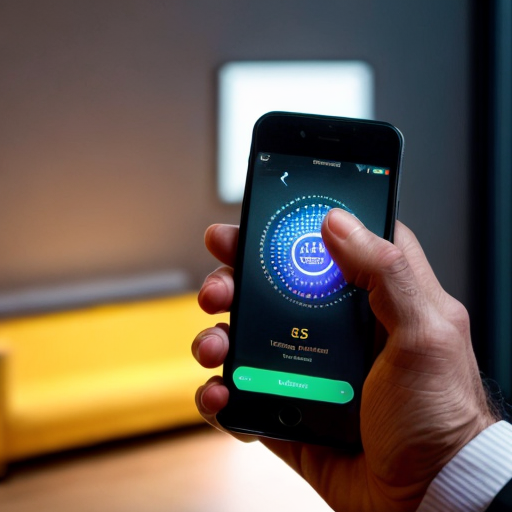Understanding the Foundations of Smart Home App Development
Alright, folks, let's dive into the fascinating world of smart home app development! Now, I know what you're thinking, 'How hard can it be? It's just an app that controls my lights and thermostat, right?' Well, hold on to your virtual hats because there's more to it than meets the eye. Developing a smart home app requires a solid understanding of the foundations. You need to grasp the intricacies of integrating various devices, ensuring seamless connectivity, and creating a user-friendly interface that doesn't make you want to throw your phone out the window when it fails to turn off the lights. So, buckle up and get ready to embark on a journey where you'll learn to make your home smarter, one app at a time!
Designing an Intuitive User Interface for Your Smart Home App
An interesting fact about developing a smart home app is that it requires a deep understanding of various technologies and protocols used in home automation systems. Developers need to be familiar with protocols like Zigbee, Z-Wave, and Wi-Fi, as well as technologies like voice recognition, artificial intelligence, and machine learning. This knowledge is crucial to ensure seamless integration and communication between different smart devices, allowing users to control and automate their homes efficiently.
Alright, fellow app developers, let's talk about the art of designing an intuitive user interface for your smart home app. Now, we all know that controlling our homes with a few taps on our smartphones is the epitome of convenience. But here's the thing - if your app's interface resembles a maze from a horror movie, your users won't be impressed. So, how do we avoid that? Well, it's all about simplicity and clarity. Keep the navigation straightforward, use clear icons, and organize the controls in a logical manner. Remember, your users should be able to navigate through your app with their eyes closed (figuratively, of course). So, let's put our design hats on and create an interface that even your grandma can use without calling you for help every five minutes!
Integrating Smart Devices and Technologies into Your App

Alright, my fellow app developers, let's dive into the exciting world of integrating smart devices and technologies into your app. Now, we all know that a smart home app is only as good as the devices it can control. So, how do we make sure our app plays nicely with all the gadgets out there? Well, it's all about compatibility and communication. First things first, you need to research and understand the different protocols and standards used by smart devices. From Wi-Fi and Bluetooth to Zigbee and Z-Wave, there's a whole alphabet soup of technologies to consider. Once you've got that down, it's time to get cozy with APIs and SDKs. These magical tools will allow your app to communicate with various devices, enabling seamless control and automation. So, roll up your sleeves, grab a cup of coffee, and get ready to integrate your app with the smartest of devices!
Now, let's talk about the importance of a robust and reliable connection when integrating smart devices into your app. Picture this: you're about to leave the house, and you want to make sure all the lights are turned off. You open your app, tap the 'Lights Off' button, and... nothing happens. Frustrating, right? That's why a stable and secure connection is crucial. Whether it's Wi-Fi, cellular data, or a combination of both, your app needs to establish a reliable link with the devices it controls. Additionally, consider implementing fail-safe mechanisms to handle connection drops or device malfunctions gracefully. After all, nobody wants to be left in the dark because their smart home app decided to take a coffee break.
Now, let's not forget about the importance of scalability when integrating smart devices and technologies into your app. Sure, you may start with a humble setup of a few lights and a thermostat, but who knows where your users' smart home ambitions will take them? That's why it's essential to design your app with scalability in mind. Consider using a modular approach that allows for easy integration of new devices and technologies as they become available. This way, your app can grow alongside your users' smart home ecosystems, ensuring a seamless and future-proof experience.
Last but not least, let's talk about the user experience when integrating smart devices into your app. Remember, your app is the gateway to a smarter home, so it needs to provide a delightful and intuitive experience. Think about how your users will interact with the devices through your app. Can they easily set up schedules and automation rules? Can they customize the controls to fit their preferences? And most importantly, can they do all of this without needing a degree in rocket science? By putting yourself in your users' shoes and prioritizing their needs, you can create an app that not only controls devices but also enhances their everyday lives. So, let's get creative and design an app that will make our users feel like the masters of their smart home domains!
Enhancing Security and Privacy in Your Smart Home App
A fun fact about developing a smart home app is that you can control your home appliances and devices with just a few taps on your smartphone, making you feel like a wizard with the power to control your entire home from the palm of your hand!
Now, let's talk about the critical aspect of enhancing security and privacy in your smart home app. We all want our homes to be safe and secure, and the same goes for our apps. When developing a smart home app, it's crucial to prioritize security measures to protect your users' data and devices. Implement robust authentication methods, such as two-factor authentication, to ensure that only authorized users can access the app. Additionally, encrypt sensitive data to prevent unauthorized access and invest in regular security audits to identify and address any vulnerabilities. Remember, your users are entrusting you with their personal information, so it's essential to prioritize their privacy and provide them with peace of mind. So, let's lock down those virtual doors and create an app that not only makes homes smarter but also keeps them safe and secure.

